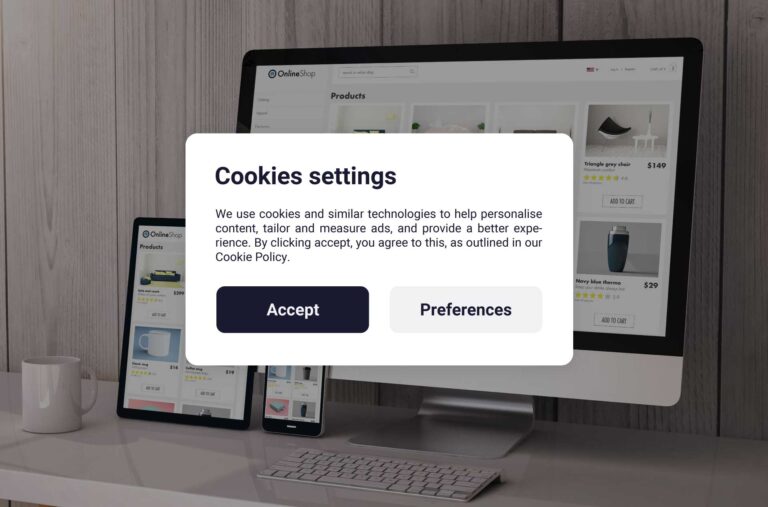Intro
Product recommendations are so commonplace nowadays that we often take them for granted.
But if they weren’t present, it would have a huge impact on the shopping experience.
It would also be devastating for online DTC brands.
The reality is that product recommendations are a critical touchpoint in helping shoppers with two things:
- Product discovery
- Completing the right purchase
In this post, we’ll walk through why these revenue touch points are of the utmost importance.
Click here to read our clear-cut guide to predictive recommendations.
The Value of Product Recommendations
(1) Product recommendations establish relevance.
When a shopper sees something that resonates with her, she are psychologically more drawn to the products and brand.
(2) Product recommendations expand visibility.
Shoppers who are browsing may not know exactly what they want yet.
But seeing products that are relevant to them, similar in category, or contextually placed allows them to find what they need.
(3) Product recommendations drive engagement (more clicks, more browsing).
When shoppers click to more pages, they tell your brand something about their interests.
This behavior allows you to learn about your customers and ensures shoppers don’t hit dead ends in their hunt.
(4) Product recommendations create purchases and upsells.
When a shopper sees something they actually like and want, they’re likely to buy it. Simple.
If you show them relevant options to tack-on, they tend to reliably increase their cart size.
Below we’ll walk through a shopping journey to highlight the important touch points.
Impacting the Shopping Journey
You’re shopping for your home and you need a rug for your bedroom.
As you shop, you have some ideas of what might look good in your room – but of course you are open to seeing what’s out there.
That’s what shopping is all about!
As you browse through the online store, you start opening new tabs to review potential options.
You view the photos and details of each rug. You save some, you X-out others.
You start to figure out that you want something Moroccan or Jute (for this example at least). So you filter for that and keep browsing and clicking and exploring.
Part 1: Product Recommendations are a central and embedded part of the shopping experience
Throughout this whole process, along every page, the website is serving up relevant product recommendations. You’re seeing rugs of different styles, colors, designs, and fabric types.
You actually start to rely on these – without realizing it.
Seriously.
Your shopping experience includes glancing over the recommendations from the online store you’re patronizing. And in a meaningful way!
These “recs” are relevant, in phases. Early phases help to give an idea of the scope of options.
Later phases help drive add-to-cart clicks.
And ideally they are actually relevant and tailored for your interests.
And relevance is what helps us most.
Part 2: Product Recommendations enable product discovery
On the first landing page and initial pages after that, the product recommendations you see are helping you do product discovery. (Rug discovery).
For the early part of the shopping journey, the recommendations give you options that might be a fit for your interests.
The early recommendations can be intelligently broad. They make sense for your search. They help you see more variations.
You’re learning about rugs, and rugs are learning about you.
Kidding. But in reality, the intelligence engine powering that product recommendation system is analyzing your behavior and page-views to keep feeding you helpful input.
But they should do it in a way that is backed by thousands of similar browsing experiences that have led to purchases, abandoned carts, or complete pivots.
Part 3: Product Recommendations drive purchases
Later in the shopping adventure the recommendations have deduced some of your affinities.
They are now giving you only the best recommendations: things you’re actually super likely to buy.
You’re only seeing the mix of products that reflect both your shopping behavior, and what these intelligent algorithms have intuited about your broader buyer profile.
So now in your search for rugs, you have some favorites and some you’ve eliminated! (We’re going to keep our bedroom neutrals strong with the rug, but not lean on patterned black lines.)
On top of these relevant, late-stage recommendations: once you have an item in the cart, recommendations can serve up related products to “complete the look”.
Notably, they can also remind you of some separate items you were interested in but stopped shopping for while selecting your rug.
Journey Takeaways
The story here is that product recommendations are a critical revenue touch point in the shopper journey that cannot be overlooked.
Of all touchpoints in the buying journey, helping to identify the right item is one of the most influential.
Because of their pivotal position, product recs are low-hanging fruit to put power behind.
And the best way to make product recommendations more powerful is to make them personally relevant to each shopper.
Could it be a fluke?
It might sound silly to some folks.
You might say: “It’s just a list of random products that may or may not be similar to the one that person is looking at.”
And that’s possible. We’ve built a list of the biggest pains in product recommendations, you can check out here.
But statistical analysis and machine learning algorithms tell a different story.
The touch points drive better website engagement and product discovery. It drives numbers like 100% to 300% in increased conversion rate.
It makes the shopping experience easier. It generates more conversions. It creates additional cross-sell and upsell opportunities.
It generates dollars. Often between 10% and 130% growth in revenue per website visitor.
We see frequently that personalized product recommendations have a big impact on core eCommerce business metrics.
Takeaways
Product recommendations form a foundational part of the online shopping experience.
Product discovery is vital.
And actually converting shoppers into customers is obviously priority 1 for every business.
Putting the best possible set of recommendations in front of your audience is essential.
So it is critical that this key revenue touch point is tailored to your shoppers one-to-one.
Consumers expect it today, and you’re losing money by not prioritizing it.
We call these personalized product recommendations: Predictive Recommendations.
Predictive recommendations are personalized based on: A) the individual shopper and their affinities, and B) the moment-to-moment place in the buying timeline, each potentially requiring unique input.
If you’re interested in learning more about predictive recommendations, reach out to our team!
You can also read our clear-cut guide to predictive recommendations.



